What's New
Displaying results 3861 - 3870 of 4899
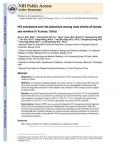
Resource | Publications,
Clients of FSWs serve as potential bridges for HIV transmission from the high-risk FSWs to the low-risk general population, making them a key target for intervention. High HIV prevalence rates among clients in Kaiyuan is particularly alarming given their risk behavior patterns, including high rates of partner exchange, low condom use rates, and drug-using behaviors. Innovative interventions are needed to reduce the risk of HIV among clients and reduce the bridge of transmission to the general population.
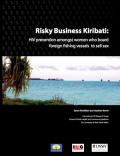
Resource | Publications,
This report documents the findings of a qualitative investigation into the context of HIV vulnerability and risk for women who engage in sex work on board foreign boats. The research aims to inform HIV prevention strategies and programs for this group, and is based on fieldwork carried out between February and August 2010 in Tarawa, Kiribati.
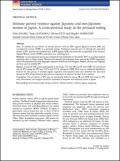
Resource | Publications,
The aim of this study is to identify the prevalence of intimate partner violence (IPV) against Japanese women (JW) and non-Japanese women (NJW) in a perinatal setting. Additional purposes were to identify the associated factors of IPV, describe the characteristics of IPV against NJW, and assess the acceptability of the Violence Against Women Screen (VAWS) instrument as a screening tool. A cross-sectional survey was conducted from September to November 2007 in an urban hospital maternity clinic in Tokyo, Japan. Women who attended the maternity clinic received the VAWS instrument, which was translated into four languages (Japanese with Kanji and Hiragana, English, Chinese, and Tagalog) and was used to identify IPV.
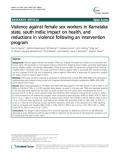
Resource | Publications,
Violence against female sex workers (FSWs) can impede HIV prevention efforts and contravenes their human rights. We developed a multi-layered violence intervention targeting policy makers, secondary stakeholders (police, lawyers, media), and primary stakeholders (FSWs), as part of wider HIV prevention programming involving >60,000 FSWs in Karnataka state. This study examined if violence against FSWs is associated with reduced condom use and increased STI/HIV risk, and if addressing violence against FSWs within a large-scale HIV prevention program can reduce levels of violence against them.
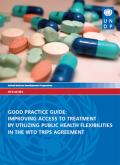
Resource | Publications,
Over the past ten years, there has been a remarkable and virtually unprecedented global scaleup of a life-saving medical technology: antiretroviral therapy for people with advanced HIV infection. This therapy not only prolongs life for most patients, it keeps people healthy enough to work, to continue their lives in families and as parents, and to contribute to their communities and countries. We now know that antiretroviral therapy also lowers the amount of HIV in the bloodstream, thus making people less infectious and contributing to HIV prevention goals as well.
The successes of the past ten years are directly linked to the drastic fall in the price of these drugs. The cost of first generation antiretrovirals has decreased from over ten thousand US dollars to as low as 67 dollars per person per year. This amazing reduction has been achieved largely thanks to competition from generic manufacturers, which, for millions of people worldwide, has been the difference between life and death. Such competition has in large part been made possible by countries' utilization of the public health flexibilities in the World Trade Organization's TRIPS Agreement.
The Good Practice Guide analyses each of the public health flexibilities in the TRIPS Agreement
and provides examples where and how have they been used by national governments. The Guide
also provides some examples on the effect of adopting intellectual property protection measures,
which exceed the minimum requirements of TRIPS and which are often introduced through bilateral trade instruments.
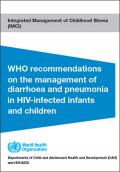
Resource | Guidelines,
The main causes of death among children under 5 years of age are acute respiratory infection (17%) and diarrhoeal disease (16%), and children infected with human immunodeficiency virus (HIV) have greater morbidity and mortality related to these conditions (WHO, 2008).
The World Health Organization (WHO) departments of Child and Adolescent Health and of HIV/AIDS reviewed the evidence on management of diarrhoea and pneumonia in HIV-infected children, because of the substantial effects of these conditions on morbidity and mortality, potential differences in etiological agents (and thus in recommended empirical regimens) from those for uninfected infants and children, potential changes in the susceptibility of pathogens to co-trimoxazole prophylaxis in these children, and the lack of specific recommendations for this high-risk group. These guidelines are part of a comprehensive set of normative documents being prepared by WHO for the prevention and treatment of common conditions affecting HIV-infected and -exposed infants and children.
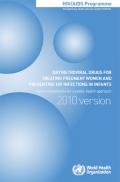
Resource | Guidelines,
The 2010 guidelines are developed to provide international standards, primarily for low- and middle income settings, in support of the global scale-up of more effective interventions aimed at preventing mother-to-child transmission of HIV (MTCT) in resource-limited settings. Once implemented, these recommendations could reduce the risk of MTCT to less than 5% (or even lower) in breastfeeding populations from a background risk of 35%, and to less than 2% in non-breastfeeding populations from a background risk of 25%, and will ensure increased maternal and child survival.
The 2010 revision of the WHO guidelines on prevention of mother-to-child transmission of HIV (PMTCT) complies with the recently updated WHO guidelines development process, which requires systematic review of new evidence for key questions and recommendations, as well as a consideration of programme feasibility and the cost implications of potential new recommendations. WHO has simultaneously revised guidelines for adult ART as well as HIV and infant feeding. All three sets of guidelines were updated in a harmonized fashion.
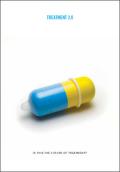
Resource | Publications,
The latest studies show that a reduction in new HIV infections of up to a third could be achieved globally if there is a radical overhaul of the way that the world provides antiretroviral therapy and if global leaders meet their commitments of ensuring that all people in need of treatment are on it.
It's called treatment as prevention and it is one of the five pillars of the new Treatment 2.0 platform. In an effort to maximize the value of antiretroviral therapy, a radically simplified approach is needed. This includes the development of better combination treatment regimens, cheaper and simplified diagnostic tools, and a low-cost community-led approach to delivery.
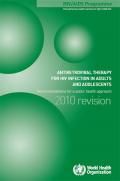
Resource | Guidelines,
Since the publication in 2006 of Antiretroviral therapy for HIV infection in adults and adolescents: Recommendations for a public health approach, new evidence has emerged on when to initiate ART, optimal ART regimens, the management of HIV coinfection with tuberculosis and chronic viral hepatitis and the management of ART failure. This evidence formed the basis for the recommendations contained in the 2010 update, which outlines a public health approach to the delivery of ART for adults and adolescents in settings with limited health systems capacity and resources. The recommendations were based on the preparation GRADE evidence profiles, systematic and targeted reviews, risk-benefit analyses, consultations with PLHIV, technical reports, and assessments of impact, feasibility and cost.
This guideline revision was conducted in accordance with procedures outlined by the WHO Guidelines Review Committee and is based on the GRADE approach to evidence review. The process involved four separate working groups: the Internal WHO ART Guideline Working Group, the ART Guideline Drafting Group, the external ART Peer Review Panel and the full ART Guideline Review Committee.
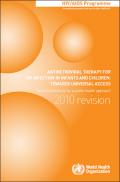
Resource | Guidelines,
Significant obstacles remain to scaling up paediatric care, including limited screening for HIV, a lack of affordable, simple diagnostic testing technologies for children less than 18 months of age, a lack of human resources with the capacity to provide the care that is required, insufficient advocacy and understanding that ART is efficacious in children, limited experience with simplified, standardized treatment guidelines, and limited availability of affordable and practical paediatric ARV formulations. Health-care systems remain unable to meet the demands of national paediatric ART coverage. Consequently, far too few children have been started on ART in resource-limited settings. Moreover, the need to treat an increasing number of HIV-infected children highlights the primary importance of preventing transmission of the virus from mother to child in the first place.
The WHO guidelines Antiretroviral therapy for HIV infection in infants and children are based on a public health approach to HIV care. Updated in 2010, these guidelines are harmonized with the treatment guidelines adopted for adults, pregnant women, and for prevention of mother- to- child transmission (PMTCT).
The present guidelines are part of WHO’s commitment to achieve universal access to the prevention, care and treatment of HIV infection in infants and children.





